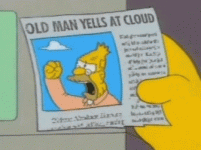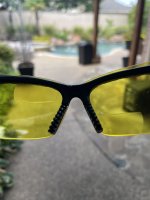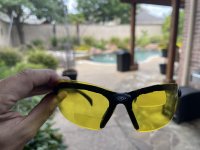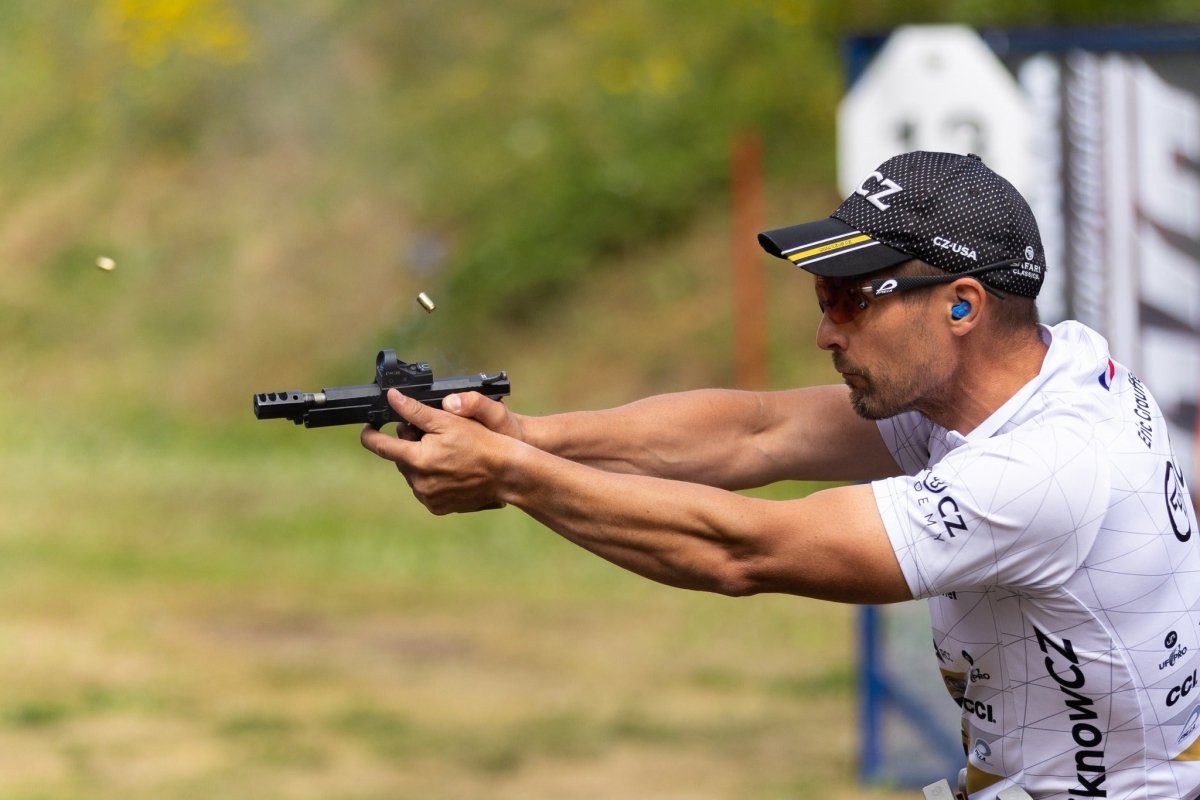I fought this battle, tried all sorts of gimmicks, and finally realized that, for me, simpler is better. I had cataract surgery before I got into rifle; I can see quite well at distance, but I can't clearly see text messages on my phone without readers - I can barely read texts if I hold the phone at extreme arm's length. I also have very limited range of motion in my neck, so head-tilting to use traditional bifocal prescriptions doesn't work for me on prone and some other stage props. Hopefully this gives you the frame of reference in which I'm working.
In my experience, you do NOT want to sacrifice distance vision in order to clearly see your dope card or turrets. Do what you need to do (contacts, prescription glasses) to see clearly at distance and set your ocular accordingly. Then worry about the close stuff.
For reading a dope card? Write big. You don't have to see the numbers clearly - you just need to see them enough to know what they are.
Reading the numbers on the scope turret?
- Some people buy little magnifiers that mount in front of the turret. I have buddies that swear by them. This approach isn't for me. I quickly discovered the cheap one I bought was nearly worthless because there was so much glare off its plastic lens that numbers were obscured, and using it was kinda like using a red dot sight on a pistol - you have to find the dot before you can put the dot on a target, and I never liked that. With the tube-mounted magnifier, unless the thing is gigantic, you have to have your head in just the right place to read the turret through the lens.
- Other people have found little "mini-reader" lenses they stick inside their plano shooting glasses. The traditional lens arrangement where one tilts one's head back to engage the "reader" area doesn't work for me with rifle glasses - I have so much arthritis and disk degeneration in my neck that it's all I can do to bend my neck enough to shoot prone, let alone bend it more to tilt my head back to read. You can order prescription lenses with the reader section anywher you want it but...
- ... of course, if you want to spend the $$ to see what works, any number of eye protection vendors offer prescription solutions to this issue. I like different-colored lenses - comes from years of NSSA skeet - and prescription lenses cost $$$. If you're at the stage where you need readers, it may not be long until you have to consider cataract surgery... after which all those high-dollar prescription lenses will be useless. Ask me how I know.
- My solution: What I learned is that, on stages where I need to dial while on the clock, I can see turret numbers on my ZCO and Vortex Razor (gen-2 and gen-3) scopes well enough - not clearly by any stretch, but well enough - if I pick my head up and back off the gun. Again, I accept that I cannot see the numbers clearly - but I've become confident I can see them well enough to dial as needed (practice & muscle memory help).
It will take you awhile to figure out what works for you. If you still have anything approaching a normal range of motion in your neck, solutions offered earlier in this thread may work very well.
Good luck.





